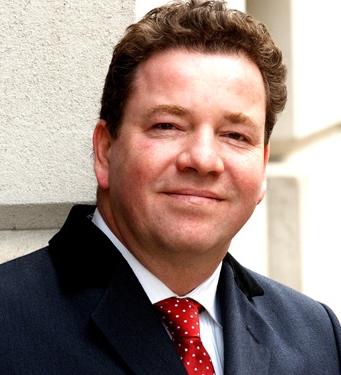High Frequency Trading: Crying Wolf?

- Peter van Wely, Head at InfoReach Automated Trading Software EMEA
- 27.07.2015 01:00 am HFT , automated trading
High-frequency trading (HFT) may be capturing the headlines, but there is a great deal of misunderstanding about how these strategies work and the technologies involved. In response to outcries in the media and ill-informed “investor” backlash, regulators on both sides of the Atlantic are looking into the practice. Meanwhile, the debate over the fairness of HFT rages on between proponents and opponents.
But is the debate over “fairness” justified? Before I answer that question, I’d first like to clarify some common points of confusion.
We often find that high-frequency and quantitative, algorithmic trading strategies are confused. Quant trading generally refers to investors who re-evaluate their intended positions regularly based on trading performance and market activity, and adjust their execution and trading strategies intraday as necessary. This is not the same as high-frequency trading, although quant traders often employ an HFT strategy as part of their arsenal.
In contrast, high-frequency trading is the use of computer-automated trading strategies along with low-latency market data and sometimes high order volumes to profit from inefficiencies in a particular market. Microsecond accessibility makes it possible to deliver hundreds and thousands of orders to the markets per second and thereby capitalize on very small price differentials. HFT also allows traders to arbitrage across multiple asset classes (such as futures index and cash equities), as well as benefit from filling the market making role and providing securities on each side of a buy and sell order.
Unlike long-only institutions, high-frequency traders are not buy and hold investors. They take advantage of short windows of opportunity and they need to react in milliseconds. To minimize risk, high-frequency trading firms don’t keep overnight or long-term positions, and they spread their trading over a variety of instruments and sectors such as equities, futures, options and emerging markets. Much of the high-frequency activity we see at the moment is for equities and futures, as options trading can be relatively costly and volume can be shallow at times.
An “unfair advantage”? No, more like an equalizer.
Now let’s get to the meat of the matter. Opponents of HFT complain that by using powerful computers, fast networks and sophisticated quantitative models, high-frequency traders achieve an unfair advantage over the rest of the market participants.
This is to the same degree or reasoning as a car has an unfair advantage over the horse in a race, and a computer has an unfair advantage over the telephone as far as trading goes!
Worse yet, this reasoning would prevent any further market innovation based on the principal of the “haves” and “have nots.” In other words, they want us to keep technology down to the lowest common denominator.
Thankfully, that’s not how the free markets have evolved and continue to evolve. The advent of electronic trading is a perfect example. I’d be willing to bet that a lot of the institutional firms now opposed to HFT were the first on the electronic trading bandwagon, thus enjoying an “unfair advantage” themselves.
In a similar vein of attack, some firms—and politicians--even go so far as to accuse HFT firms of speculative market exploitation. While HFT can to some extent sway markets or enhances market trends, so can conventional investment and trading strategies. Not to mention the illegal practice of insider trading!
Returning to the issue of “fairness,” I do not believe such a debate is even relevant. Like many innovations over the years, high-frequency strategies bring efficiencies to the market and should not be squelched. It should be up to electronic trading firms to invest in their own technological capabilities to ensure they are not “disadvantaged.” Those who don’t can still focus their attention on factors relating to macro movements and holding positions for longer periods, which is probably their comfort zone anyway.
Reducing the barriers to entry
Traditionally, the cost of getting into the HFT game has been an expensive proposition that requires sizeable investments in resources to both maintain and upgrade hardware and software. In fact, I suspect that many of the bitter complaints against it are made by firms who can’t afford the expensive, high-tech environments necessary to participate.
However, in the past year or so, independent technology providers have introduced affordable HFT solutions like the InfoReach “HiFREQ” component, which gives traders the ability to employ low-latency arbitrage strategies for equities, futures, options and FX. By licensing the InfoReach execution management system (EMS) with HiFREQ, investors can participate at a fraction of the cost of building and maintaining their own infrastructure. And because InfoReach Execution Management Software is global and broker-neutral, firms can trade multiple asset classes at multiple destinations through their choice of brokers.
Additionally, there are other solutions in the marketplace such as co-location services that reduce network latency between exchanges and trading engines, low-latency market data providers and high-frequency event processing providers. Many of them are broker-neutral and hardware-agnostic, so they are easily integrated within a firm’s existing infrastructure.
By employing the third-party solutions available today, even the smallest buy- and sell-side firms and prop traders can successfully compete with the larger players in the high-frequency markets.
In the end, technology is—and should always be—a great equalizer in the markets. Such drastic measures as regulating the pace of trading to a human-clickable interaction speed so that traders can review quotes visually and respond to them manually will align the industry to the slowest and the least technically advanced participant. As long as every participant has an equal opportunity to compete, high-frequency trading should be a fair game open to all, and one should not cry wolf.




















